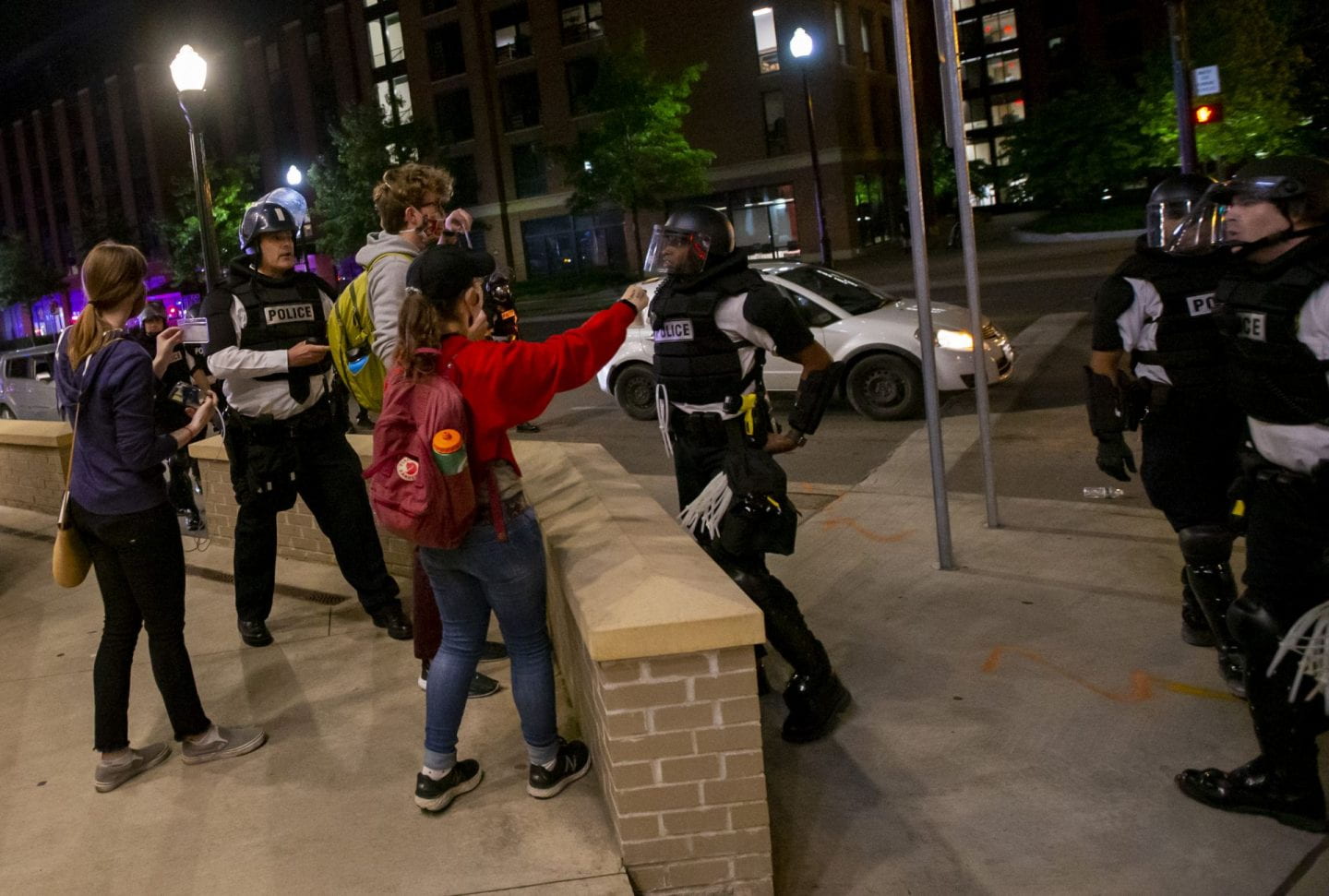The student journalists from Ohio State University’s Lantern are sure of this: They did everything right.
They were standing on a sidewalk, while protestors were in the middle of a nearby intersection.
The students showed their press badges. They repeatedly and clearly stated they were reporters, that they were with the media.
But that didn’t stop police from pepper-spraying them.
The incident took place Monday night on the edge of campus in Columbus, Ohio, after several days of protests and police presence.
A group of three Lantern journalists were among those taking shifts covering the unrest. Maeve Walsh, Max Garrison and Sarah Szilagy were outside, while Lantern editor-in-chief Sam Raudins managed her staff from her apartment.
The trio was standing watching what had thus far been a peaceful protest when police appeared suddenly. The reporters noticed pepper spray being shot toward the street.
“They were in riot gear and at this point we were still on the sidelines,” Walsh said. “We clearly identified ourselves as members of the Lantern; we were holding our press passes up, you know, shouting, ‘We’re members of the press, we’re exempt from the curfew, we’re allowed to be here!'”
She said one officer “explicitly said, I don’t care, leave or you’re going to jail.”
All three were together.
“We don’t have any reason to believe that we were in the wrong area,” Walsh said. “Our protocol is to stay on the sidelines.”
Raudins added, “A lot of people are saying, ‘Why didn’t you just move?’ They didn’t ask us to move, they told us to get out.”
Walsh said the group started to move.
“And then all of a sudden, one of the police officers pepper-sprayed directly at us,” she said. It hit Garrison’s arm and blew back into Szilagy’s face. Walsh estimated they were 5-10 feet away when the officer sprayed. The group ran away from the police down an alley and then made their way to their editor’s apartment.
Our reporters were sprayed by police after identifying themselves as “news media” repeatedly. News media are exempt from the curfew. #columbusprotest pic.twitter.com/GOzptPjZD9
— The Lantern (@TheLantern) June 2, 2020
Owen Milnes, one of The Lantern students covering the protests, said that over the last few days he’d been caught in drifts of tear gas and pepper spray several times.
He displayed via a Zoom call the red marks on his arms.
He said of getting sprayed: “It hurts. It burns.”
Raudins said, “Basically it’s been a couple of days of pepper spray, is the best way to summarize it … We learned very quickly how to triage pepper spray burns.”
Most of the students are from Ohio, so coming back to campus to cover the protests made sense.
“Coronavirus was weeks on end of daily breaking news and it was like the sky was falling every single day, and that was really exhausting,” said Raudins, who has been the editor in chief for a little less than a month. “I feel like the protests are a really condensed, hyper-speed version of what we went through when we covered coronavirus.”
The incident made a splash online when the students posted the video. Officers addressed it Tuesday morning in a press conference.
“It was frustrating to hear the chief of police say it was for our own safety … they blatantly told us ‘We don’t care that you’re the press, you need to leave.'”
Walsh said officials blamed the incident on a lack of training and education among the officers.
“I don’t think that’s an excuse when you are supposed to protect and serve the community of Columbus,” Walsh said. “By not knowing those laws, you’re basically denying the community information that journalists can provide.”
The staff members said they heard later that arrests were made that night, but they weren’t there to document it.
Raudins said, “We want those First Amendment rights to be preserved for other journalists who might be in a similar situation to us.”
Walsh agreed.
“When you limit the press you can’t bring truth to power, and I think in situations like these when we’re trying to hold authority accountable and they are punishing us for doing that, that says a lot about the institution, and it says a lot about the institution of journalism as well and the way that we are viewed.”
Barbara Allen is the director of college programming at Poynter. She can be reached at ballen@poynter.org or on Twitter, @barbara_allen_







